EBR charges a service fee to manufacturers to produce ebike reviews and videos, this began in 2018. It’s the same flat fee for each bike, and it helps us to keep the site going while limiting ad clutter. We appreciate the opportunity to serve you with our opinions and data but respect your right to know that we receive compensation :)
The Rebel Gravel-X PW is Easy Motion’s first gravel grinder electric bike offering. As a part of their Rebel series of ebikes, this model utilizes Yamaha drive systems (motor, battery, and display). In order to keep the bike lightweight and nimble, they chose to use the PWseries motor vs. the PW-X. And, from what I’ve been told by several leading electric bike shops in the US and Canada, this is one of the most reliable systems around right now… but it does come with some trade-offs in performance, which I’ll cover in a bit. The all-black frame looks beautiful, helping the black battery and motor casings blend in. It only comes in one frame size and the frame is high-step, so this may not be a perfect fit for everyone. The good news is, Easy Motion has cultivated a vast dealer network where you can take test rides and get fitted properly. Their parent company, BH, has been operating since 1909 and is based in Spain. They offer one of the longest warranties in the industry, up to five years if you register post-purchase. Some of the features that stood out to me on the Gravel-X were heat-dissipating brake calipers, sturdy 12 mm thru axles with quick release front and rear, a removable LCD with Micro-USB charge port built-in to the control pad, and a 22-speed drivetrain 2×11 with Shimano 105 derailleurs. Gravel grinders offer stability and comfort on packed earth compared to traditional road bikes. You get multiple hand positions (flats, hoods, drops) for changing body position and optimizing aerodynamics. While the Yamaha PW motor only assists up to 20 mph, it utilizes a traditional chainring setup and does not produce any friction or drag. This means you can easily pedal beyond 20 mph or ride the bike completely unpowered. I was very impressed with the onboard range estimator which displayed 40+ miles even in the highest level of assist. Weighing in at roughly 42 lbs, this is one of the lighter ebikes that I have reviewed and that makes it easier to handle in general. With a removable battery pack, lifting and performing maintenance is a breeze… I just wish that they had been able to squeeze in some bottle cage bosses on the seat tube and possibly on the underside of the top tube. There are bosses for adding racks and fenders, but you’ll need an anywhere adapter (or some equivalent) to take advantage of the open frame space. I also like frame bags, and it seems like there is plenty of space here for one, especially because the battery tips out to the left side vs. seating in vertically. As much as I love the sporty feel of products like this, my back and neck have become more sensitive with age, so it’s nice to have the higher air volume in the tires, padded grips, and more comfortable saddle here. The tires offer a decent PSI range and I found them to be a little full during our test rides because my friend Joe weighs a bit more and setup the bike. As we talked about the sizing and fit, he suggested a 31.6 mm seat post suspension as a way to further smooth out the ride. This will add to the cost, which is already a bit higher at $3.4k, but could make sense given the typically longer rides that ebikes support. Your legs may not be tired, but keeping the rest of your body comfortable becomes a big focus, at least for me.
Driving this electric bike is a Yamaha PWseries 250 watt mid-drive. It’s efficient, fairly quite, and extremely quick to start… but it doesn’t slow down as quickly as Bosch, Shimano, or Brose. The PW is Yamaha’s entry-point motor, it doesn’t offer the same torque or high-speed operation as the PW SE or PW-X (rated at 110 and 120 RPM respectively). With the standard PW, your maximum motor-supported pedal speed tops out around 100 RPM and then the motor fades out. You can definitely pedal beyond this rate, the motor won’t slow you down or produce any drag, it’s just not going to help you. In practice, my experience has been that this requires more active shifting rather than varying pedal speed to transition from flats to climbs. Let’s say that you’re pedaling on flats but see a hill in the distance and decide to shift down to prepare for it. This would allow your legs to gain a mechanical advantage in exchange for faster pedal strokes… the only issue is that the motor may not be there to help you. There are also fewer teeth (called pawls) inside this motor to catch-on when you pedal, so there can be a bit more play when starting. I’m being direct and technical here, but many many owners and shops love the PWseries and get along just fine with it. I actually think it makes a lot of sense on the Emotion Gravel-X because of the weight and efficiency on offer. This is a more active e-bike to begin with and this motor is designed for support vs. pure power. That’s not to say that it cannot climb however, it offers up to 70 Newton meters of torque and can be very effective when pedaling in lower gears… you just go slower. I personally prefer to pedal at higher rates because I come from a road cycling background and have a sensitive knee. I don’t love having to shift up to higher gears to reach the top speed when I could simply pedal faster… So, it all comes down to personal preference and what type of riding you do. This is one of the few current-generation mid-motors that can support multiple chainrings, and the Gravel-X uses two, so that means you can comfortably pedal at a wide range of speeds. It does not offer shift detection, like Bosch, but the controller does listen for rear wheel speed, pedal cadence, and pedal torque. Just keep this in mind as you shift through 11 sprockets in the cassette and those two chainrings… ease off a bit so as not to stress the chain, cogs, and derailleur systems.
Powering this electric bicycle is a 36 volt 11 amp hour battery pack that I would consider slightly below average, in terms of capacity, for 2018 generation. It works well with the efficient PW motor, but might disappoint for longer trekking rides. You can definitely purchase a second pack, but I’d consider these a bit heavier than average at 6.6 lbs vs. the 5.5 lb similar-capacity Bosch Powerpack 400. Most newer Bosch batteries offer ~500 watt hours of capacity (a ~20% increase) and still weigh less than this Yamaha pack. I’m not sure where the weight comes from? possibly more plastic in the casing or the side-slide mounting interface? It does have a large LED capacity indicator with press button on top, so you can see if it’s charged even when it’s not mounted to the bike frame. I love that the battery has a big sturdy loop at the top, for secure lifting and transport. You can charge it while mounted to the frame or unlock it and store/charge it separately. I usually prefer to charge my batteries on my ebikes because I tend to park them inside… That would definitely be my approach here because the bike is so lightweight, making it easier to lift up stairs and position in a corner. There is no kickstand and no provisions for adding one aftermarket. Anyway, extreme heat and cold can be hard on Lithium-ion batteries, and you don’t want to let them drop too low beyond 20% capacity (especially if you’re storing them for long periods) because it can stress the cell chemistry. The thing is, the charging port on this pack is very near the left crank arm when you try to plug it in while it’s mounted to the frame. The port itself is a small circle and the tip of the charging cable seems a bit delicate to me. If you were charging the bike and the pedals got bumped, it seems like this charging cable could get bent or cracked off. Also, the Yamaha battery charger is larger and heavier than almost all of the competition. This is a bummer for those who intend to take the charger along for distance rides, especially given the 396 watt hour battery capacity. At least the charger fills faster at 4 amps vs. just 2 amps and you could pack it into a trunk bag or panniers if you decide to add a disc brake compatible rear rack. Bosch definitely wins on the battery and charger front, but a redeeming design choice from Yamaha is how the battery slides in from the side of the frame, allowing for lower top tubes, bottle cages and frame bags as mentioned earlier.
Operating the bike is very straightforward and the Yamaha LCD display panel is one of my personal favorites. It’s large and easy to read, swivels to reduce glare, has a nice blue backlight (that I don’t think you can disable, that’s one of the trade-offs), and the entire thing can be removed for safe keeping. If you’re someone who plans on commuting with the Easy Motion Gravel-X PW, it’s nice to remove the display when parking at public racks. This way, you won’t get scratches, sun damage, or water streaks over time. To activate the display, you press the power button on the top edge of the little black control pad, mounted near the right section of handlebar. I do believe that this control pad could be mounted to the left side of the handlebar too, but some of the cables might protrude more. The display boots up quickly and shows your current speed, active assist level, power meter, and some trip stats. The Gravel-X doesn’t come with integrated lights but some shops can add them aftermarket for you, and in this case you would turn them on by pressing a dedicated light button on the control pad. There’s also an S button on the control pad, and this allows you to cycle through trip stats like odometer, trip distance, battery percentage (which is much nicer to have than a simple infographic with bars), and DIST or “range estimate”. Being able to press the up and down arrows and see how your range may vary on the fly is very cool! It adds a lot of confidence for long rides and allows you to assess which assist level will get you to the finish line without running out of juice. Overall, the cockpit of this electric bike is fairly clean but the control pad may not always be easy to reach because of the three hand positions… you basically have to back up onto the flat section of bar. It’s a trade off that all of the gravel grinder ebikes have had to make, and they each do it differently. I appreciate that the control pad is at least within reach of the right grip vs. up high and in the center.
I was told that Easy Motion has match the geometry of the $1,500 non-electric BH Gravel 105 bicycle with this electric offering. They’ve created a great looking product that performs well in my opinion. As someone with limited experience in the gravel grinder space, it was exciting to test ride and discover more about the category in general. I personally love the sporty feel of road bikes but do frequent dirt paths and gravel roads on my cross country mountain bike, so I see how the category might have been born from the two. While it was disappointing to not see bottle cage bosses, nothing on the bike really seemed dumbed down. The bladed spokes, aero rims, and sturdy thru-axles are very unique here. The disc brakes stood out because of the heat-sink caliper housings and unique 160/140 mm rotor sizing. The larger front rotor will provide good stopping power as rider weight shifts and both will stay cleaner on dusty trails. I prefer hydraulic but suppose that mechanical would be easier to repair in remote locations? I’m trying to give Easy Motion the benefit of the doubt there and recognize that price is always a factor… It’s why they only brought one size frame in despite offering four frames and hydraulic brakes on the non-electric Gravel 105. Part of me really wanted to see a Class 3 speed pedelec offering here, but those ebikes are usually not allowed on mountain bike trails. By keeping the weight and speed down, this bike should perform well over long distances and shine as a more bike-like electric offering. Big thanks to Easy Motion for partnering with me on this review. I’ll do my best to answer questions and engage with comments below and would love to hear your thoughts as an owner or demo rider either here or in the Easy Motion Forums.
Pros:
- Extremely lightweight for an electric bike, weighing in at just ~42 lbs the Rebel Gravel-X will be easier to pedal unassisted or beyond the maximum supported 20 mph top speed, lifting and servicing is also easier
- This is one of the few mid-drive electric bikes with a 2x chainring setup, and that means it can offer more gear combinations (22 gear ratios total) that allow for a wider range of pedal cadence options, this is relevant for a more active ebike that’s lightweight and I love how the Yamaha PWseries motor does not produce pedal drag like some other motors with reduction gearing
- I love that the frame and fork have bosses for adding fenders, a rear rack, and possibly a front rack if you decide to use this ebike for commuting or trekking
- Beautiful aesthetic here, everything is matched in black that transitions from matte in the front to glossy at the back, love the bladed aerodynamic spokes
- Disc brakes tend to stay cleaner than rim brakes when riding off-road and the Gravel-X is designed to take on dirt trails and gravel-grinder conditions so they really make sense here… hydraulic disc would be nice to see but possibly more difficult to fix and adjust on the trail so I see why they might have gone this direction
- The caliper housings for the disc brakes have bladed heat sinks to help dissipate heat in long downhill sections, it’s a great upgrade for a trail-ready product with a bit more weight like this
- Both the front and back wheel utilize a sturdy 12 mm thru-axle with maxle style quick release vs. a traditional 9 mm axle with quick release skewer, this should improve power transfer and support the larger trail tires
- In order to keep the weight down and maximize power transfer, the bike doesn’t ship with any suspension upgrades but Easy Motion opted for a thicker 31.6 mm seat post that could be upgraded with a dropper or lightweight suspension post like the carbon fiber Kinekt with a 31.6 mm shim to improve ride comfort
- There aren’t very many e-bikes with drop bars and road-oriented drivetrains like the Shimano 105 here, it offers an aerodynamic body position with three hand placements (flat, hoods, or drop bar lowers)
- The battery pack and motor blend nicely with the black frame, most of the wires are internally routed, the battery tips out to the left vs. seating vertically so it won’t clunk into the top tube and chip your paint as easily
- I love how the Yamaha battery pack has a large plastic loop handle at the top to offer more secure carrying, I also appreciate the faster 4 amp charger here because it will allow you to get back on the trails more quickly
- The display panel is large, easy to interact with, has a more precise 10-bar battery infographic, range estimator, is removable, utilizes a remote button pad for easy interaction (or somewhat easy considering the unique drop bar setup here, it sounds like you can position it on the right or left side of the bar), and there’s a Micro-USB port for charging Garmin or other GPS devices and portable electronic accessories on the go
- The Yamaha PWseries motor only weighs ~7.72 lbs, which is light for a mid-drive, and is smaller than some competing products so it blends into the frame and raises ground clearance, I appreciate the plastic skid plate below the motor for protection on trails with this bike
- Excellent weight distribution with both the motor and battery positioned very low and centrally on the frame, this provides stability and improves handling which is key for off-road use, it’s a sporty bike
- Yamaha makes ebike systems for a range of third parties (including Easy Motion, Haibike, and their own line) so finding replacement parts or renting/borrowing batteries when traveling should be easy… and that’s great since it usually isn’t legal to fly with high capacity Lithium-ion packs like this, I think the high capacity battery is also backwards compatible to fit this same mount so perhaps you could upgrade someday for more range
Cons:
- I didn’t see bottle cage bosses on the seat tube which is a huge bummer because it looks like there is plenty of room (depending on frame size), so consider using an anywhere adapter there, it would be nice if this bike also had bosses on the base of the top tube for fluids or other accessories (the non-electric BH Gravel 105 does have two sets of bosses, so why did they nerf the ebike?)
- I was a little bit surprised to see that the frame is only being produced in one size, this might limit the fit options for riders but it also allows Easy Motion to keep the price down
- The Yamaha PWseries motor is lightweight and efficient but it doesn’t offer the faster pedal cadence support of the PW-X motors, you only get support up to 100 RPM (pedal strokes per minute) and this means that downshifting in anticipation of a hill may leave you unsupported… I love to spin quickly so this is a noticeable bummer for me personally
- The ~400 watt hour battery capacity is slightly below average for the 2018 timeframe, many competitors are offering ~500 watt hours at a similar weight which would be nice for trail environments that take more energy
- The Yamaha battery charger is quite large, doesn’t have a detachable wall side… so it’s also long, and the circular plug port is skinny and seemingly delicate (especially since it’s in the rotation path of the left crank arm), I feel that Bosch and others have produced superior chargers that are more convenient and durable so it would be cool to see Yamaha follow suit
- Minor complaint, I’m not sure whether the bike actually comes with pedals but the ones I saw were basic plastic cages that can get scraped up and cracked easily when the bike is laid down (no kickstand here), I realize that most people will have clip-in pedals but if you do want to keep platforms, I’d probably opt for some lightweight magnesium pedals like these
- The sales rep that I spoke with, Joe Marcoux, mentioned that the company has been struggling to keep the Gravel-X in stock, perhaps it’s just marketing speak but you might want to check with your dealer early if this seems like a good fit for you… Otherwise consider gravel grinders from Fantic, Raleigh, Giant, and Bulls by searching “drop bars” here
- The shorter wheelbase provides control and seems to be the style for gravel bikes but with larger 700c (28-inch) wheels, there is a possibility of clipping your toes on the front tire when turning sharp
- None of the current-generation Yamaha mid-motors offer shift detection, you can reduce drivetrain wear by easing off as you shift gears since the motor controller measures rear wheel speed, pedal cadence, and pedal torque
Resources:
- Official Site: https://emotionbikesusa.com/
- More Pictures: https://photos.app.goo.gl/dma5Y2SpkaZTA9sh6

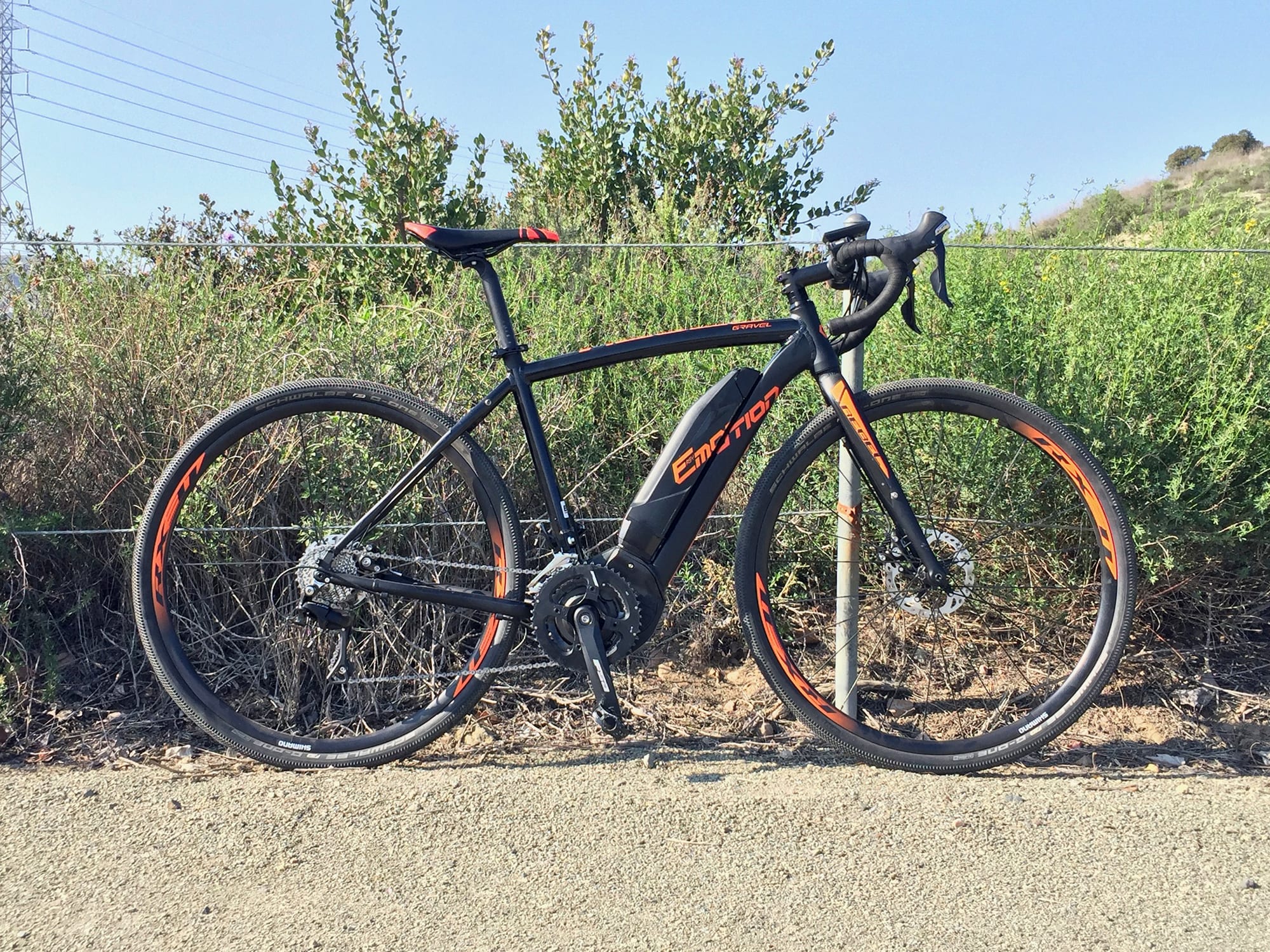

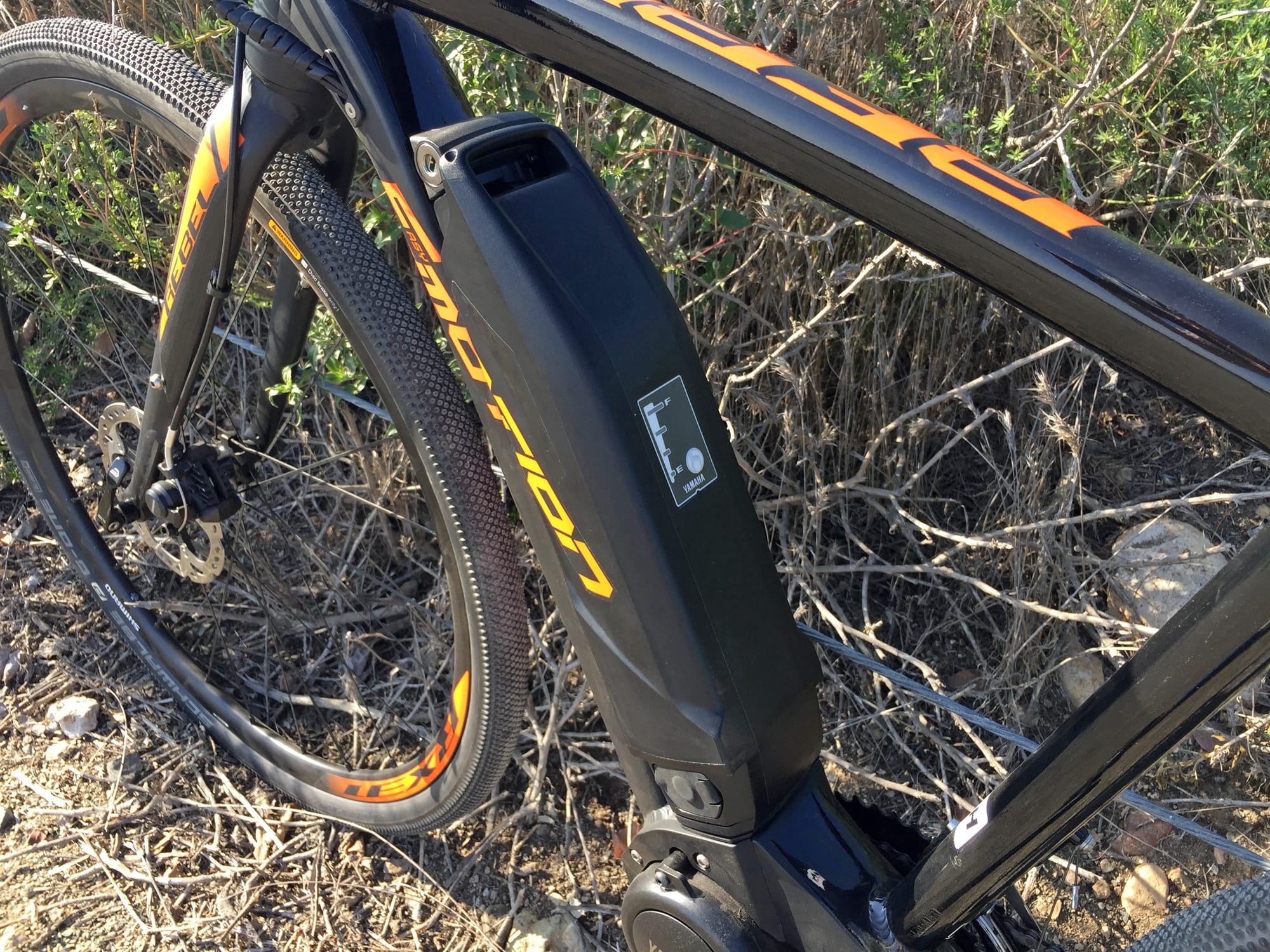

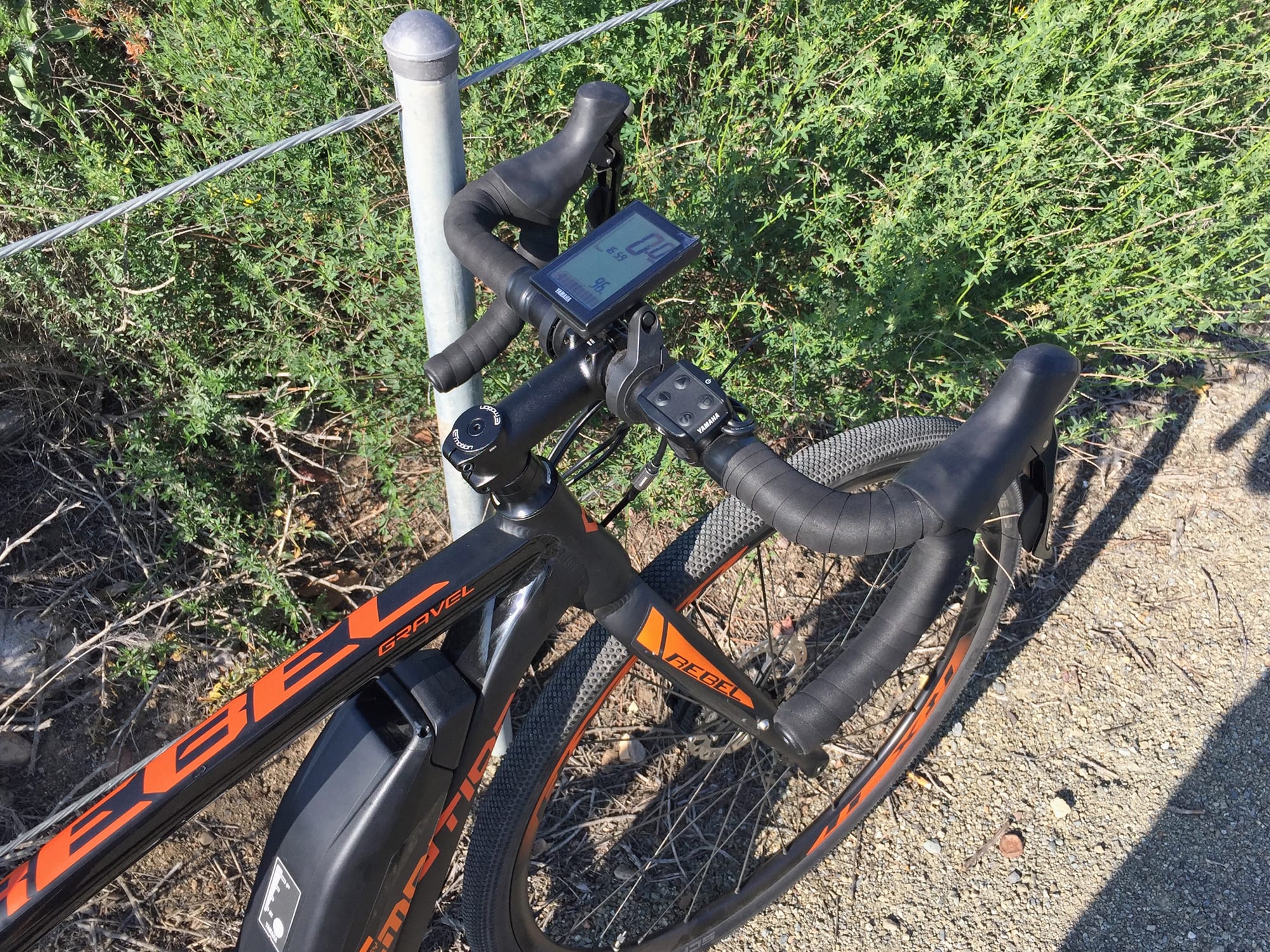
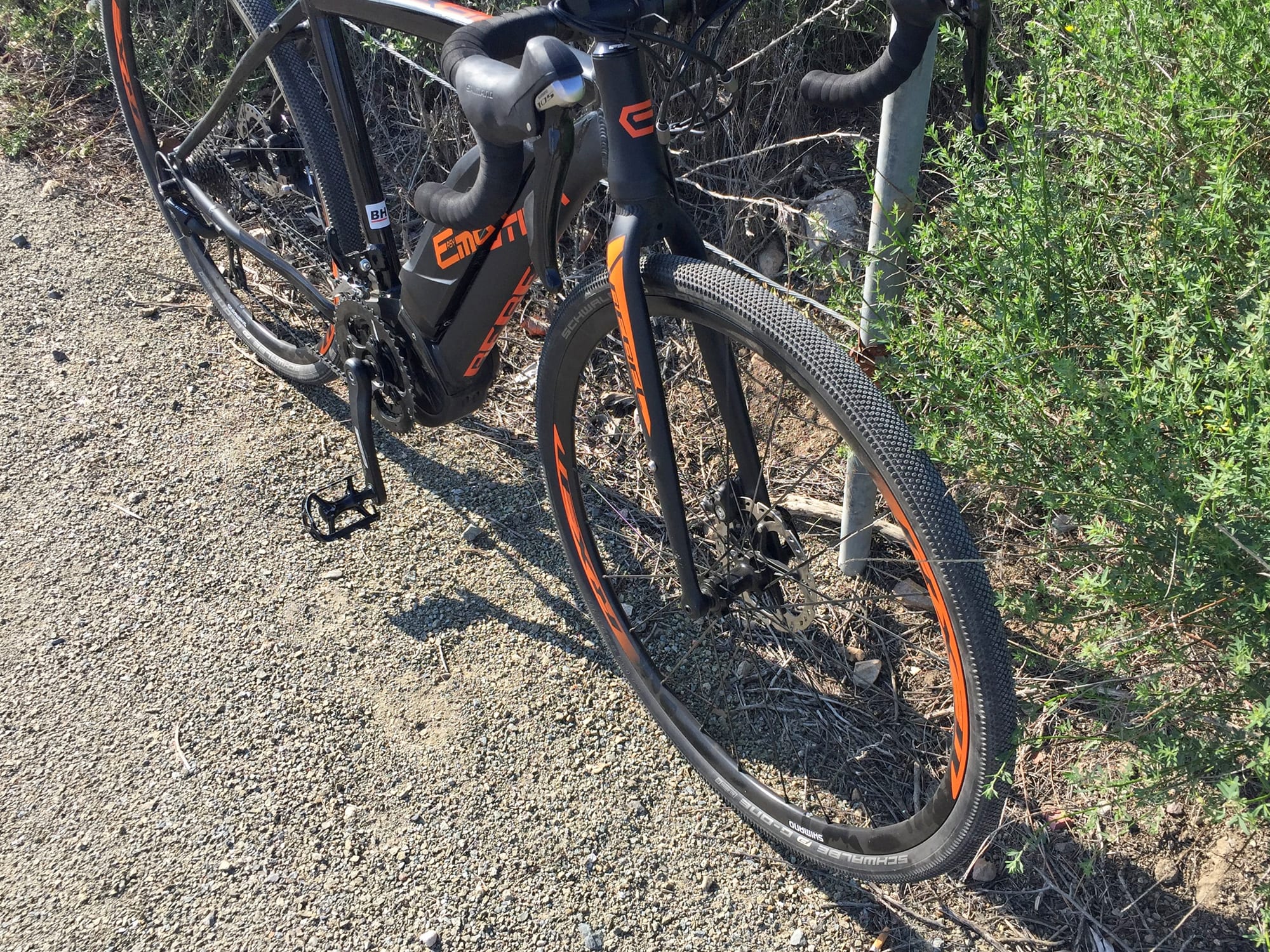
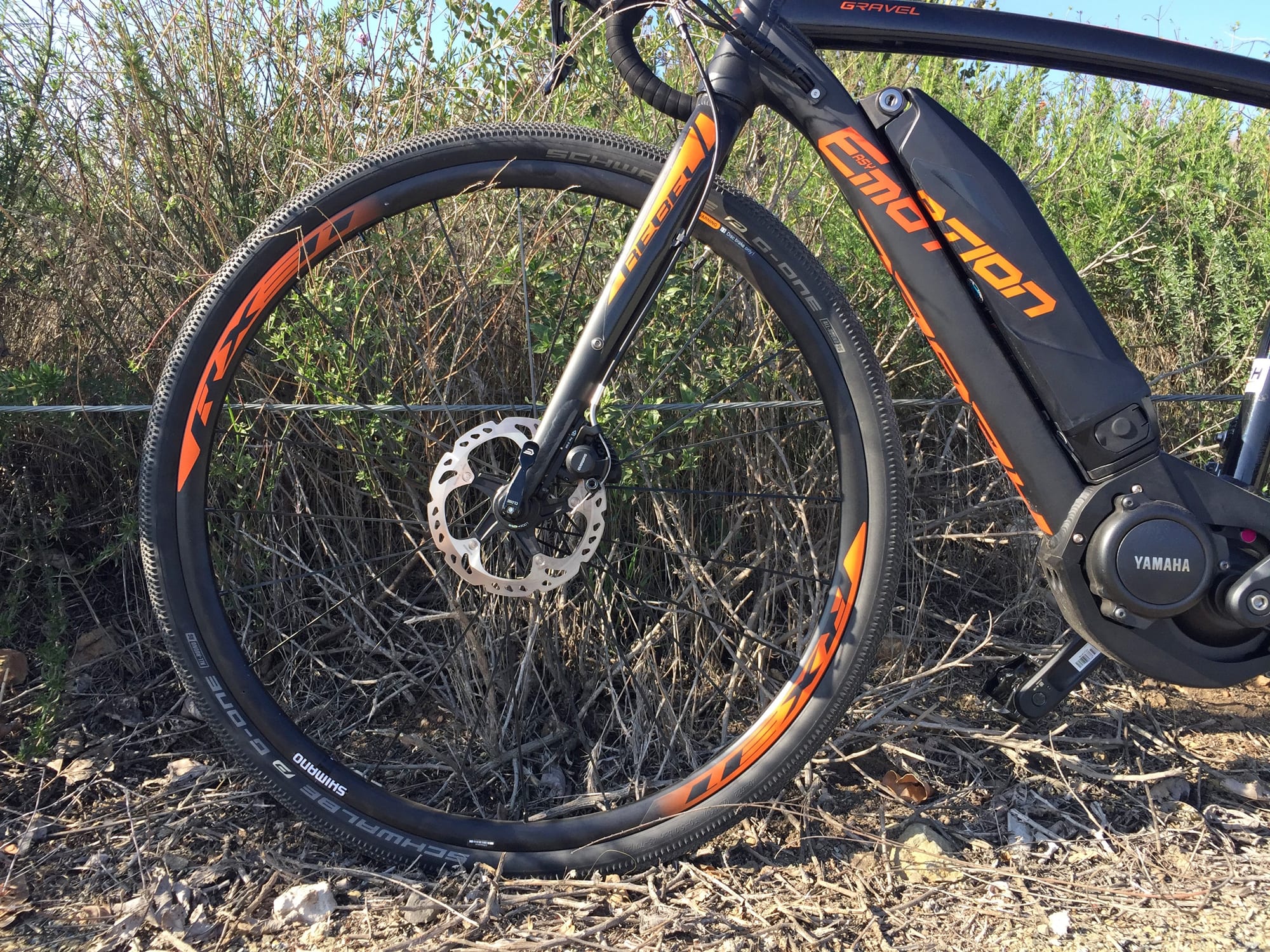
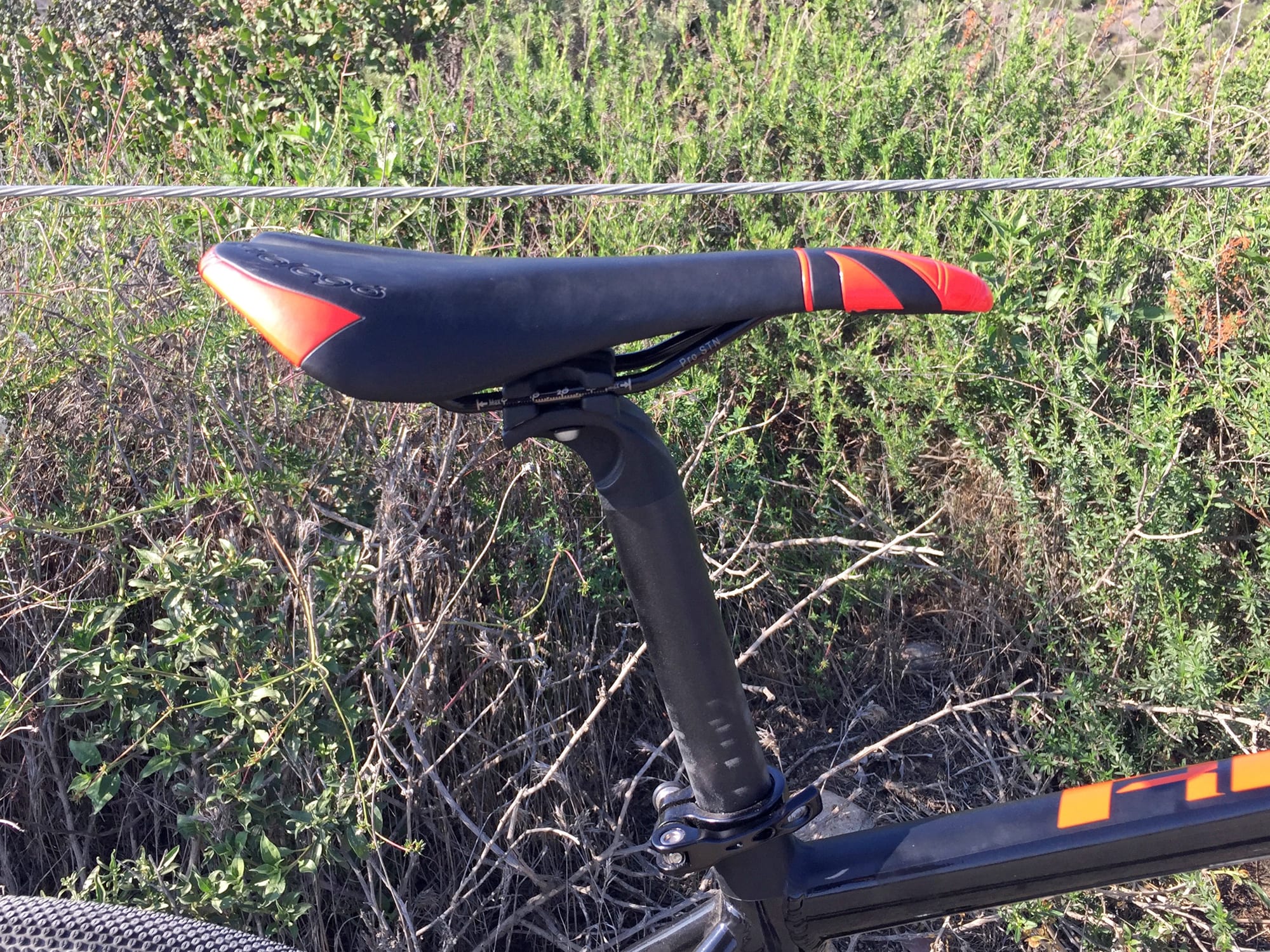

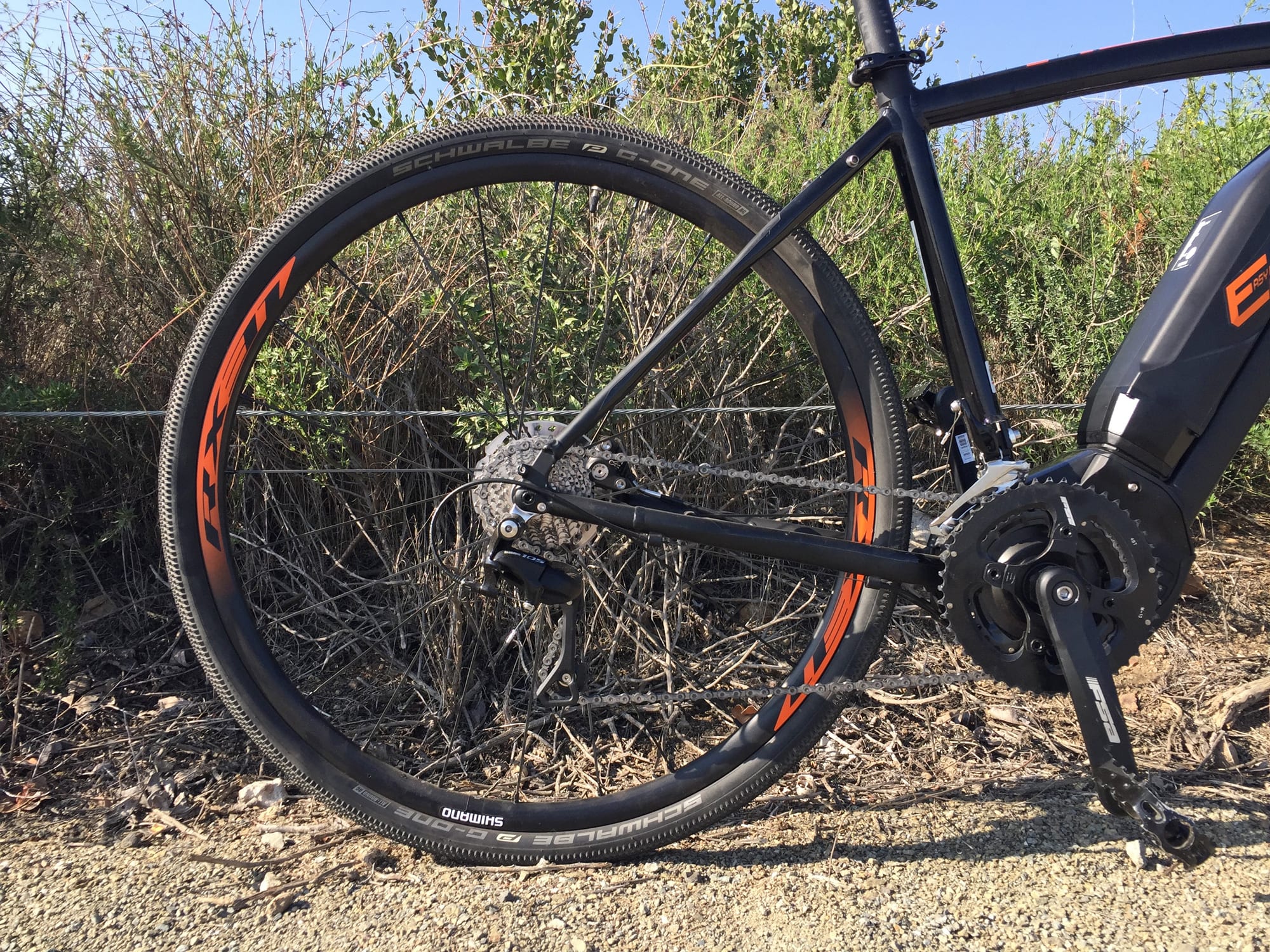
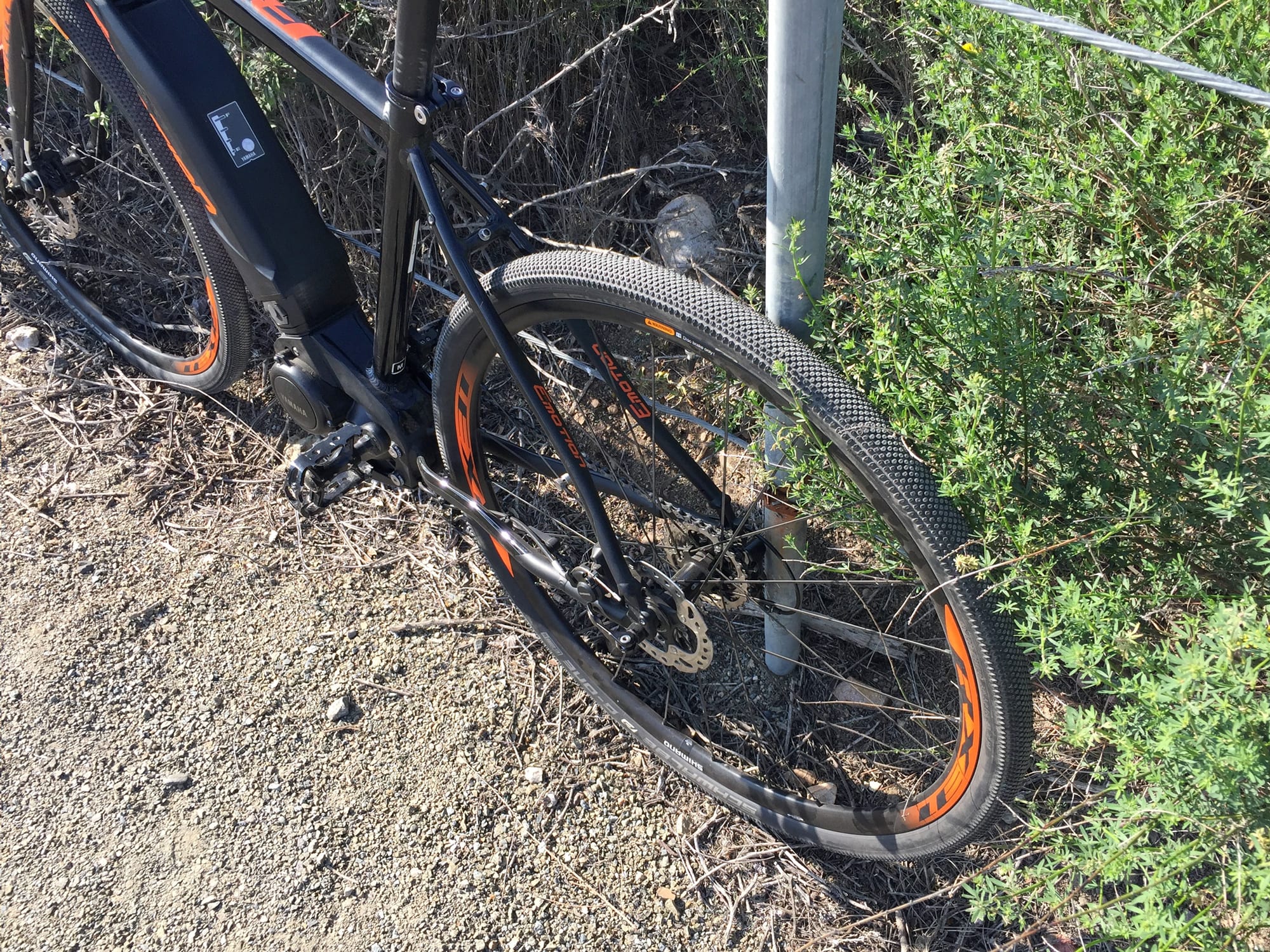

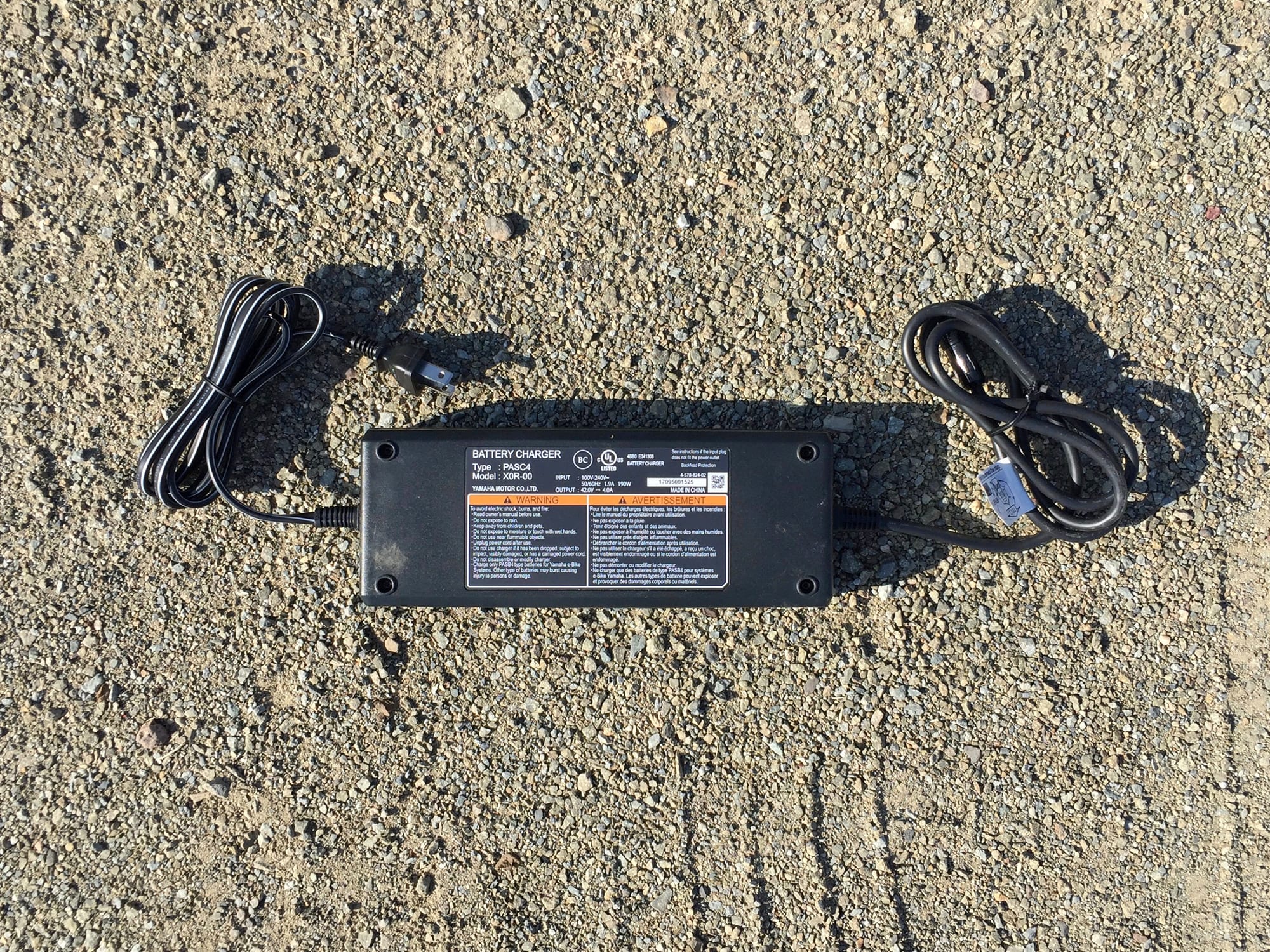

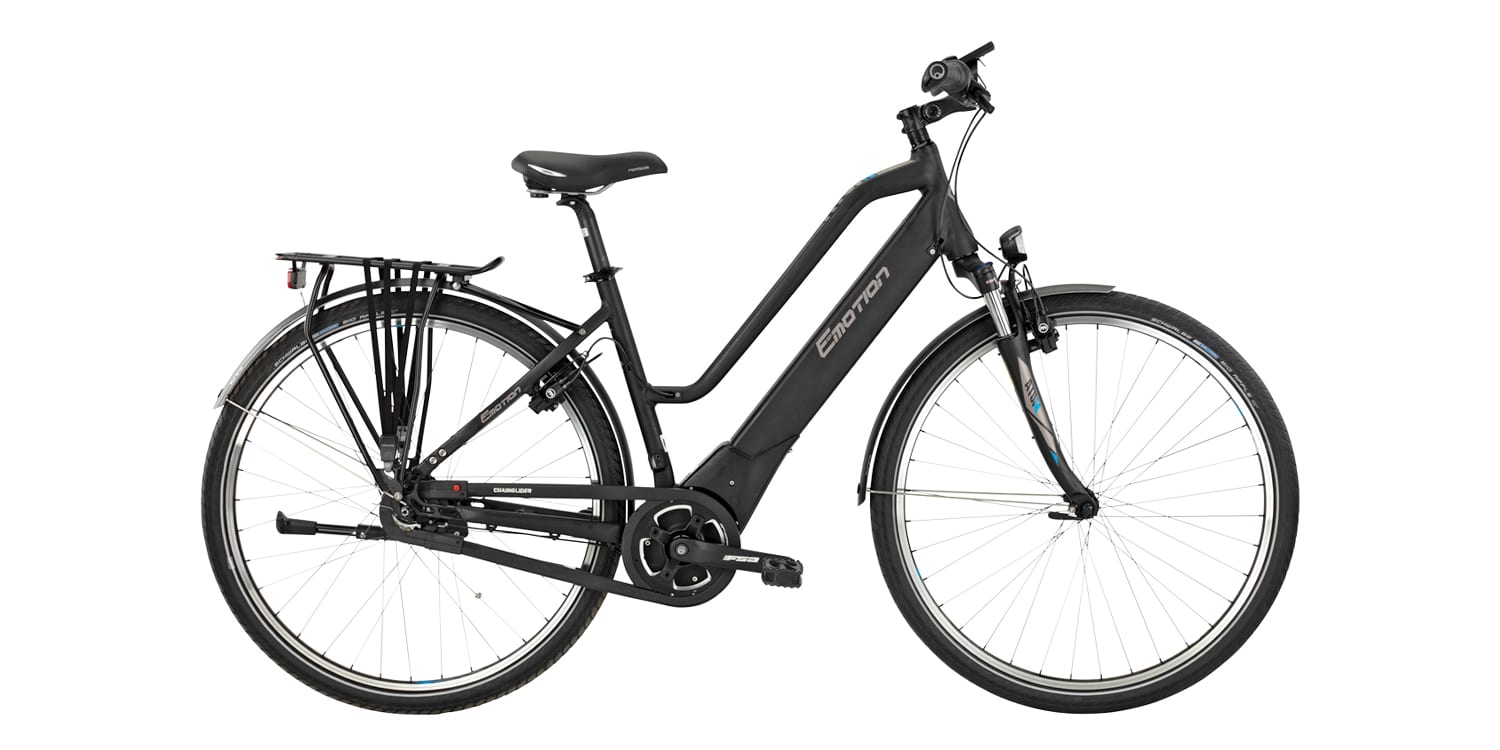
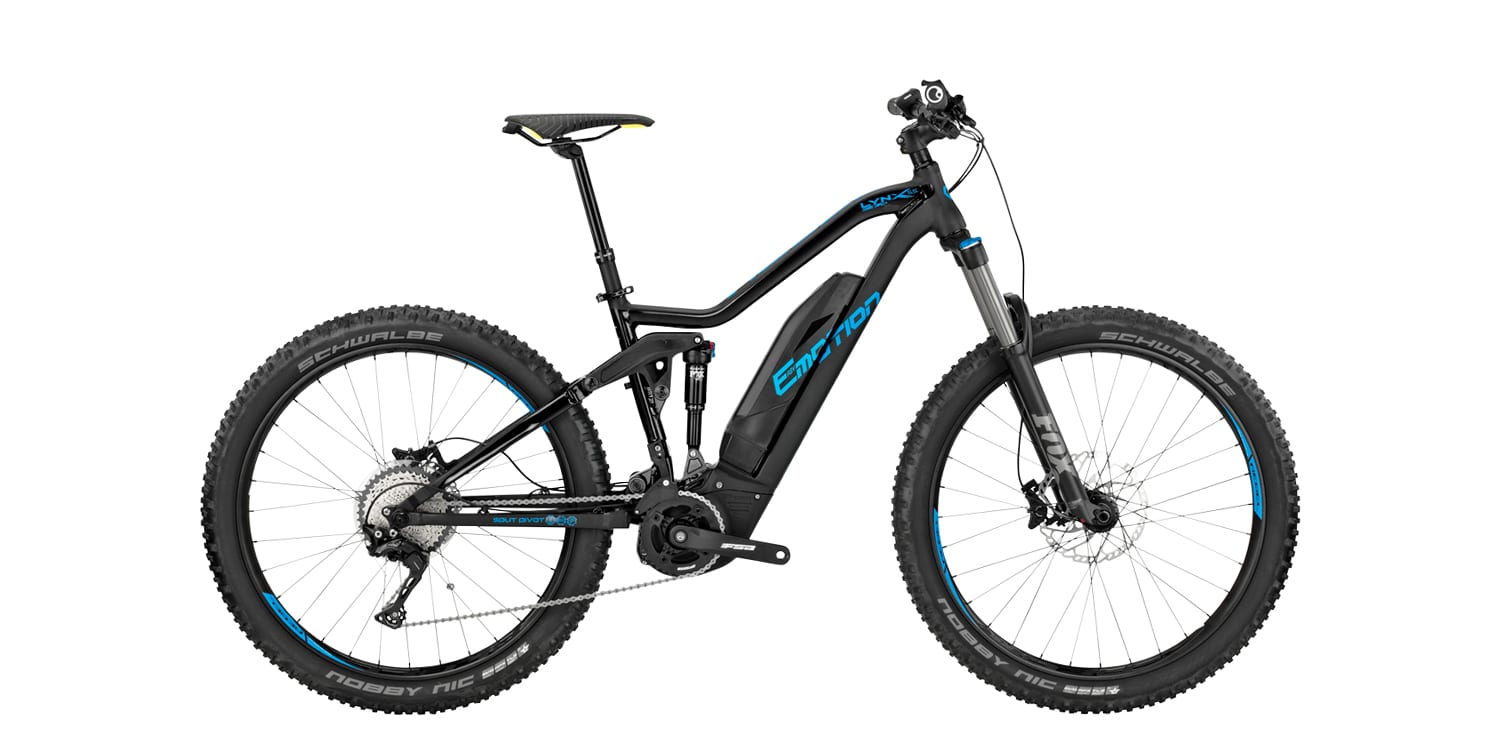
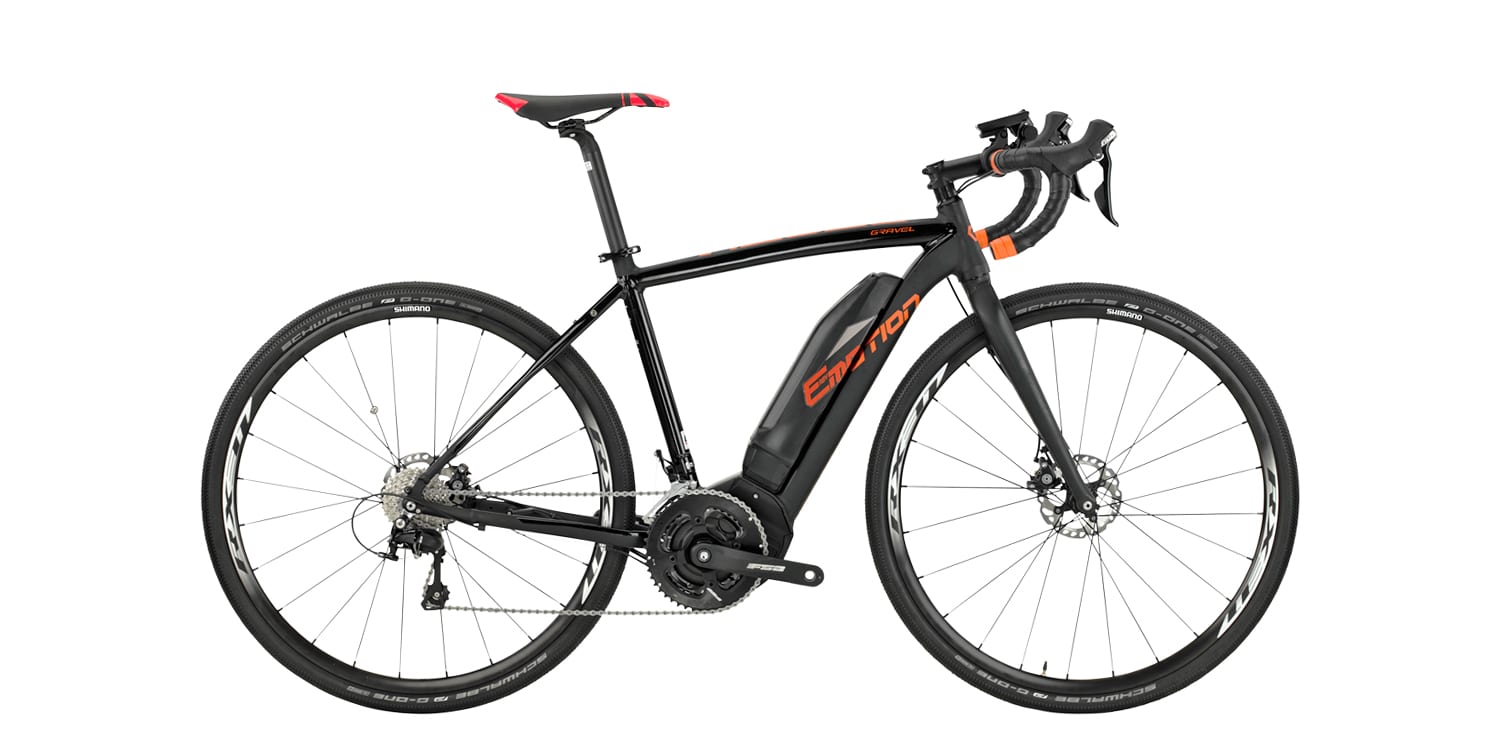
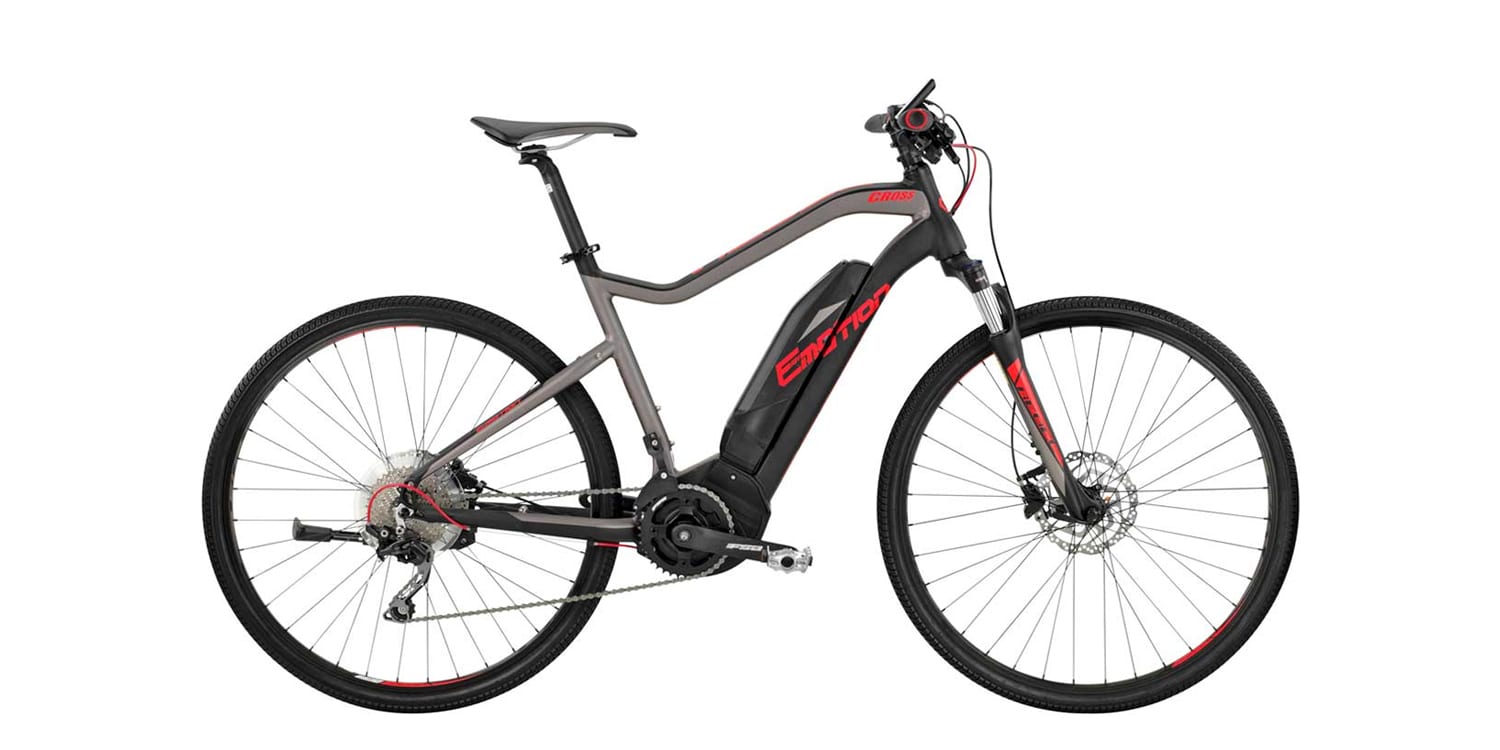
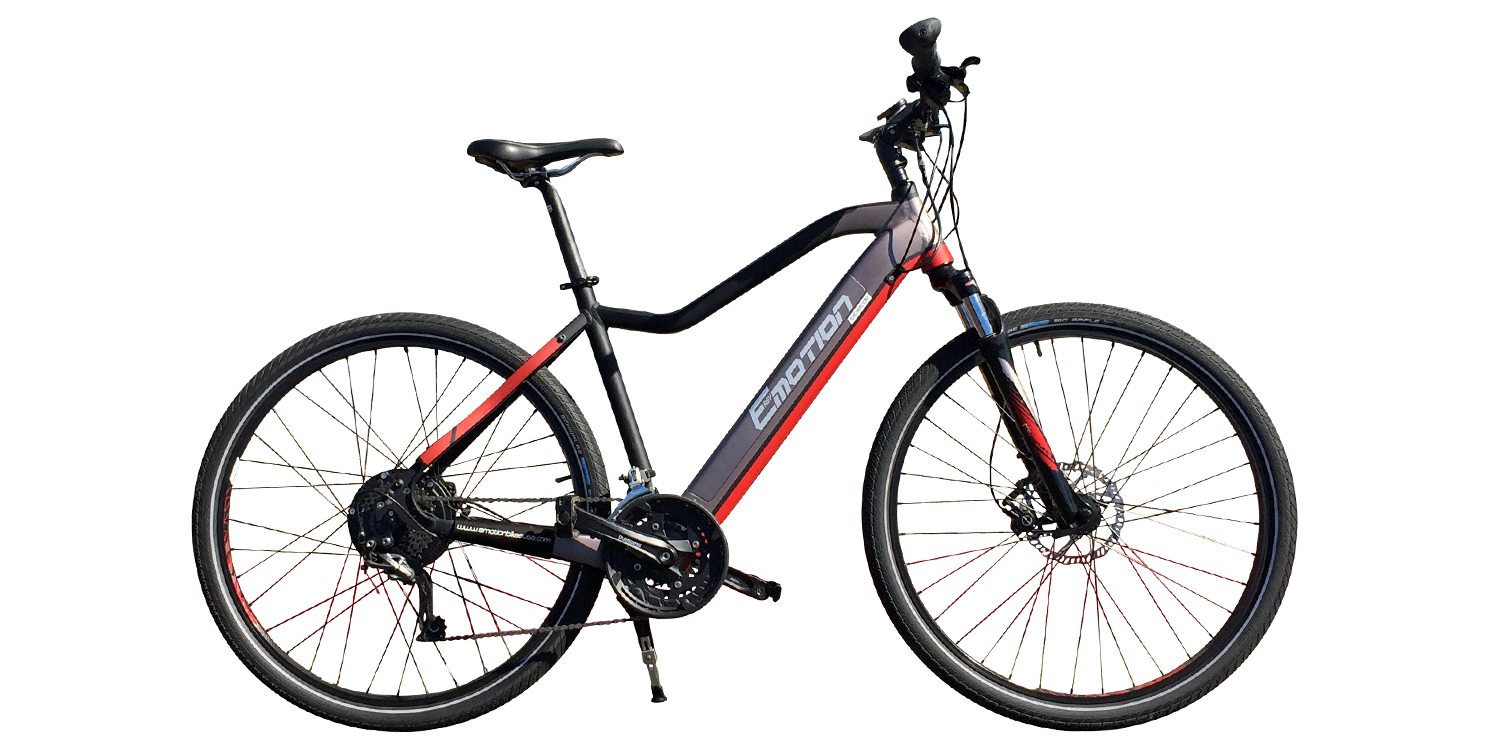

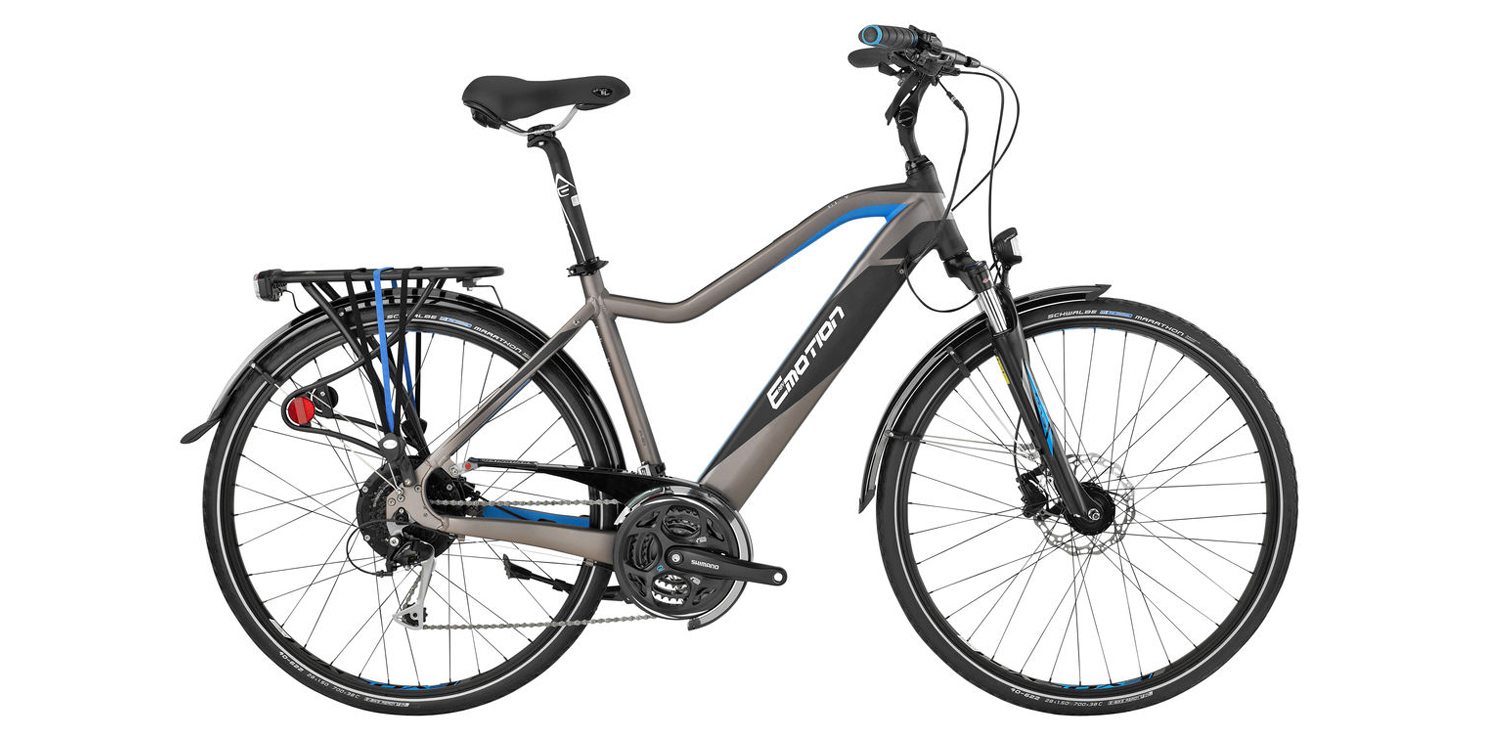
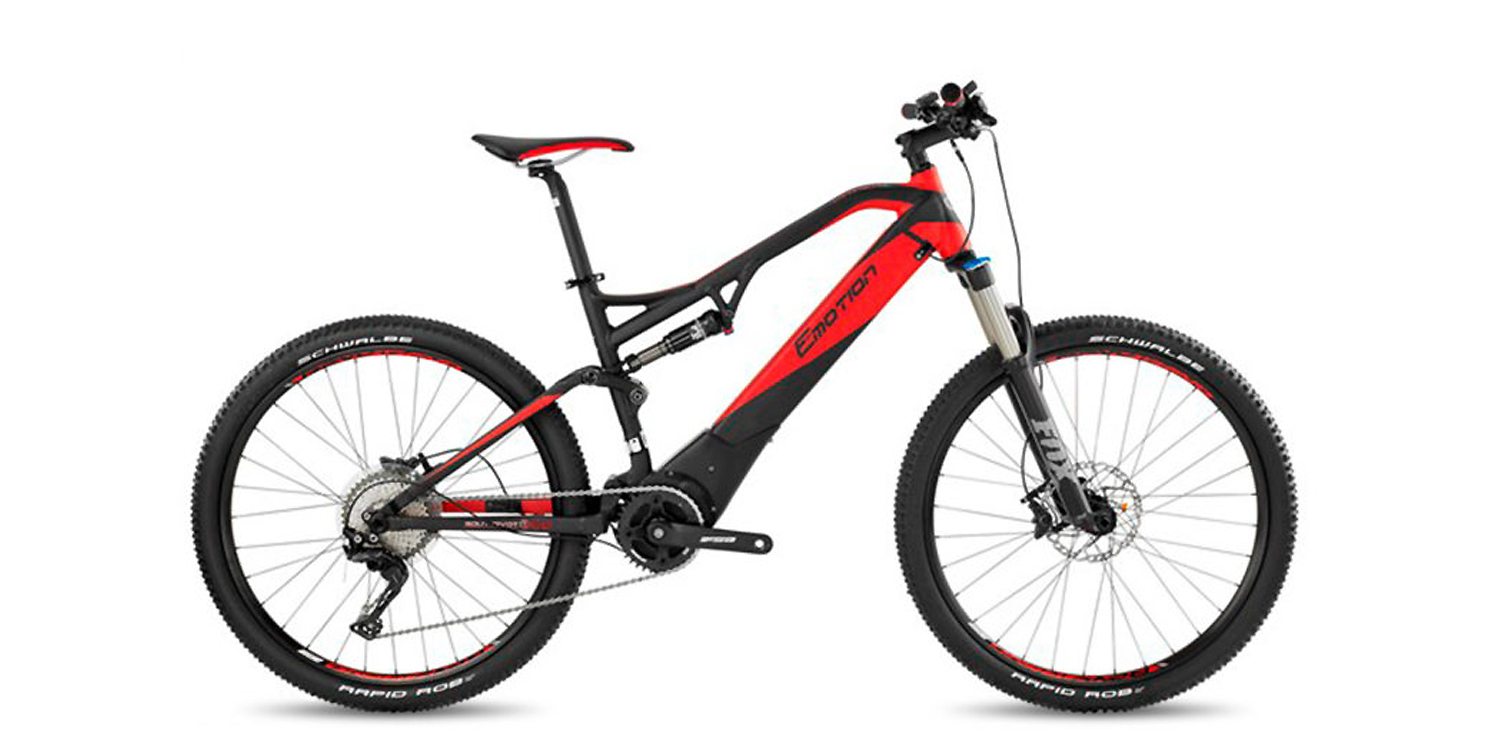
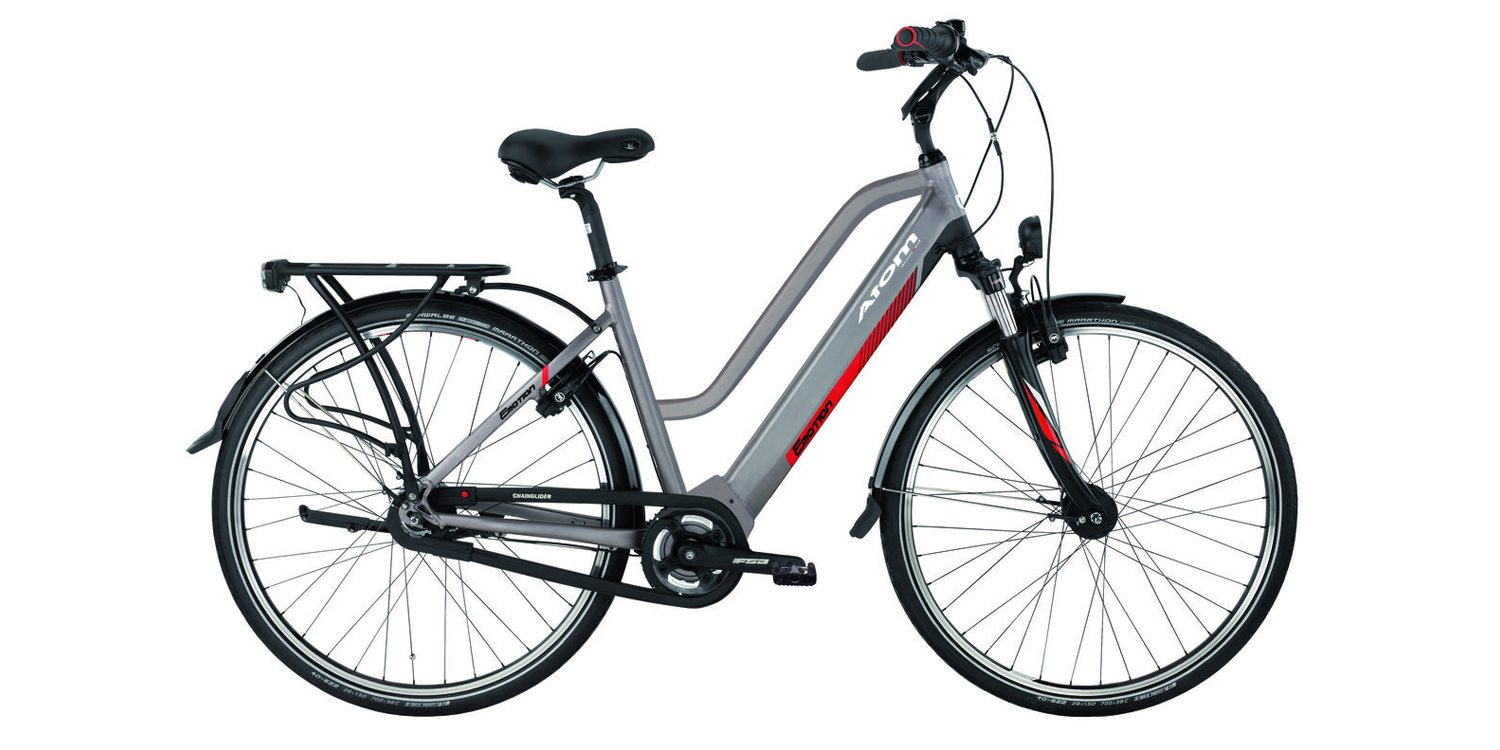
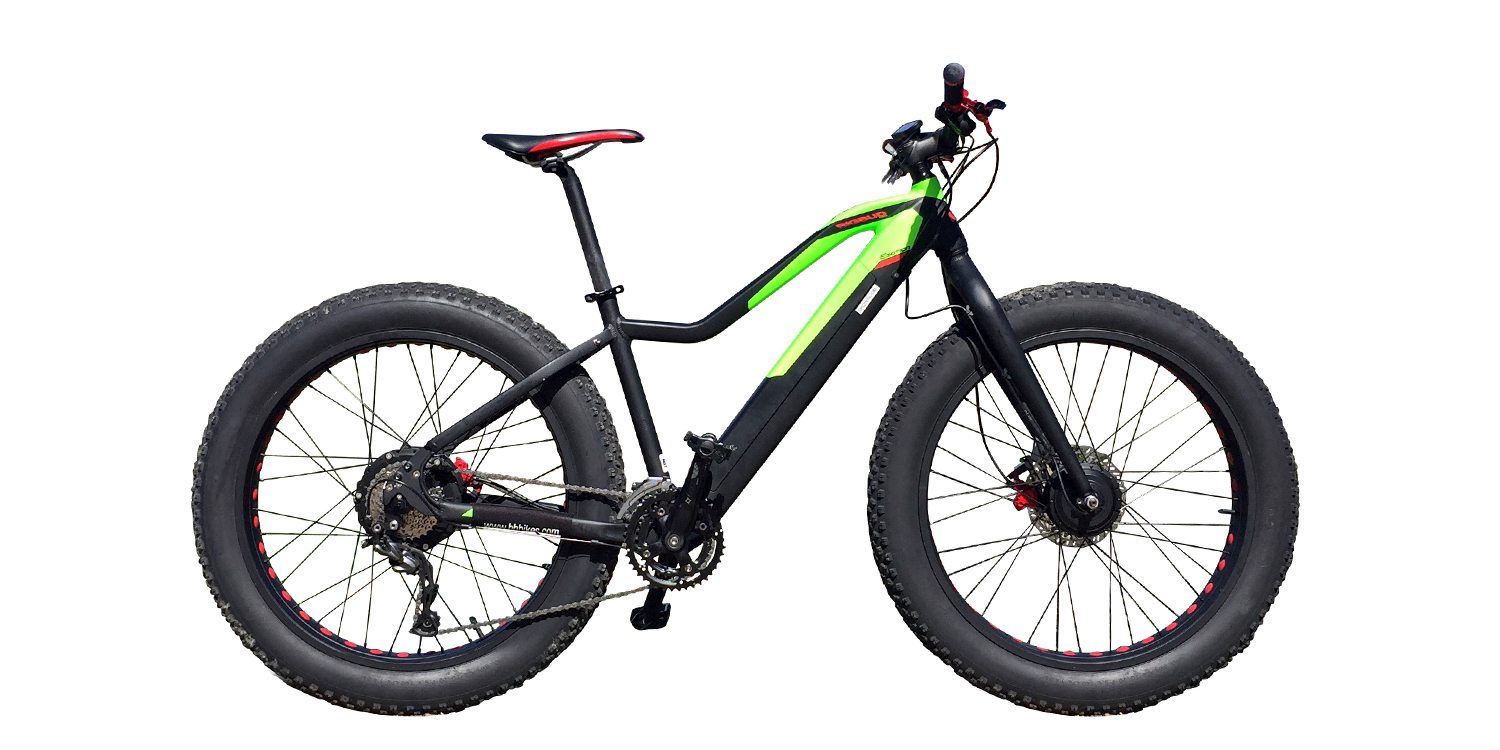
Kenneth Maruska says
Nice looking bike with compelling performance although 28mph Class 3 would make sense on this model. I know the G-One tires have great performance but I believe they are very thin-skinned tires that will likely be prone to thorn flats on a gravel bike. My guess is that buyers riding this bike in the western US will quickly have to switch to a more puncture proof tire even if they are using a sealant. I do like the appearance of this bike but just not a bike geometry I can ride these days.
I do really wonder if an aggressive riding position and smaller air volume tires really makes sense for most urban / road oriented ebikes. The world of professional road racing has a huge impact on perception as I remember buying my first Bianchi road bike because that’s what the pros were riding. This was 30 years ago when I was in my 20s, yet after just 1000 miles or so of just commute riding I really wondered why I was torturing myself with an aggressive aero riding position. When I bought my fist eBike I knew that I didn’t want to put myself in that riding position. I find that a more upright riding position on an ebike just makes more sense for me (being in my mid 50s it was even more so). With the motor assist an ebike provides I would think that most fitness and urban mobility riders would be better off with a more upright riding position – just the improved visibility alone helps you ride safer, especially at the higher average speeds you will ride at on an ebike (to get aero you can always still tuck down if you want but if staying upright only adds say 100-200 watts of air resistance at 20mph that a small power penalty when you are on an eBike).
court says
I love your feedback and observations here, Kenneth. Thorns do seem like more of a possibility on gravel trails so it might make sense to bring a patch kit along and consider upgrades if it becomes an issue. We’re on the same page with body position too, I find myself riding further on electric bicycles and that makes comfort an important factor. I could see myself choosing a gravel bike vs. a pure road bike and would definitely lean towards suspension post upgrades or even geometry changes. Part of me really loves drop bars but hybrid city bikes (with suspension) have a lot to offer when wind resistance is negated by electric assist.
Kenneth Maruska says
Thanks. Without a doubt road and gravel bikes that are purpose built for smooth roads and efficiency are very fast even without a e-drive system. Placing the rider in an aero position is a significant factor in that but for everyday commute riding that is just a negative factor (I’m 57 so that is one of the reasons that position is just not comfortable). I certainly don’t want to take away from the appeal of this bike but I just like to emphasize the riding position as a factor everyone should consider before buying an eBike. I have found that sitting up just adds comfort and better visibility (it just feels safer because it’s just easier to see a wide scan in front of you which is important when commuting in the crazy infrastructure of most cities). As you mention, with the assist the wind resistance just isn’t as important but you can always tuck down a bit on any bike as desired… it’s not really possible to sit upright on a road bike unless riding with no hands.